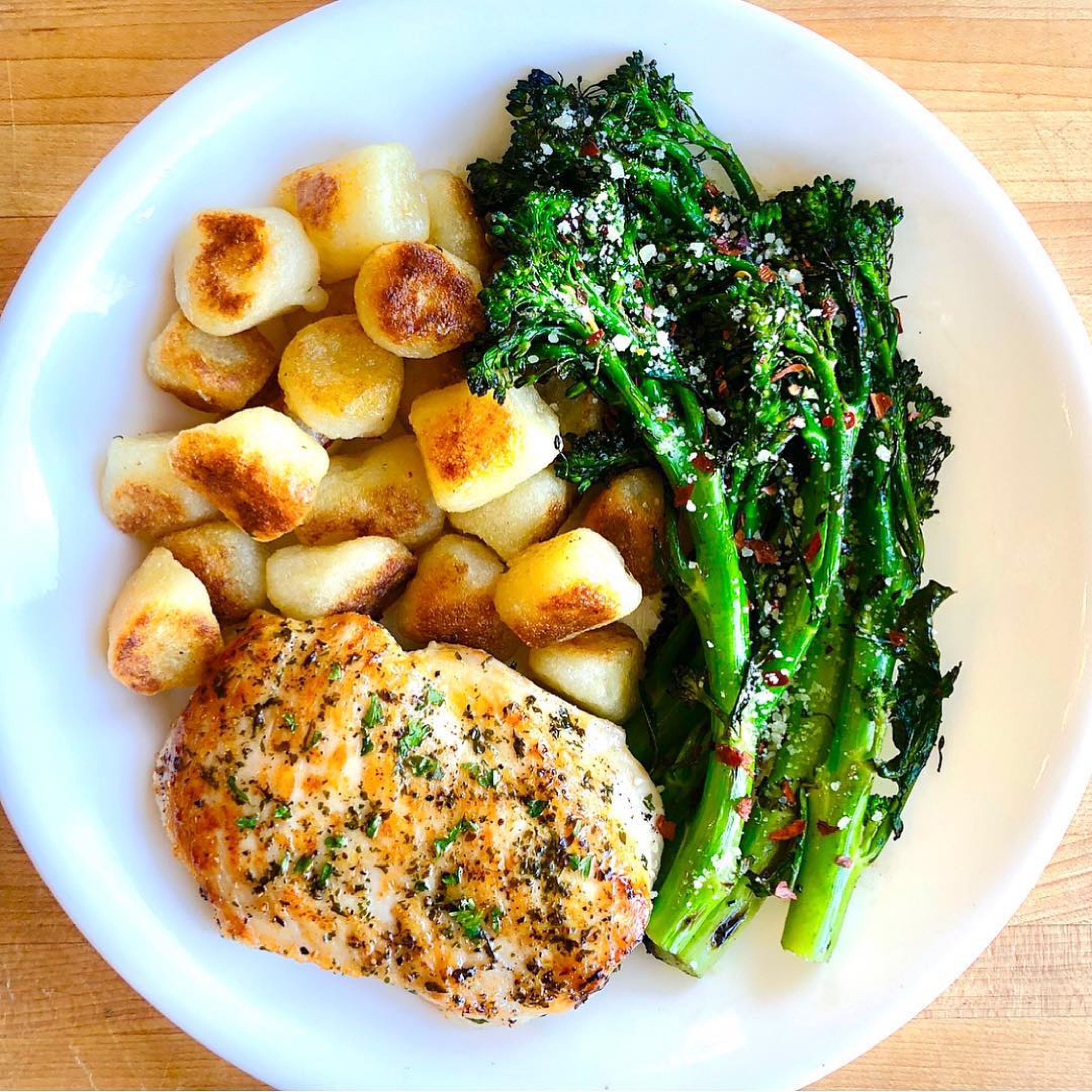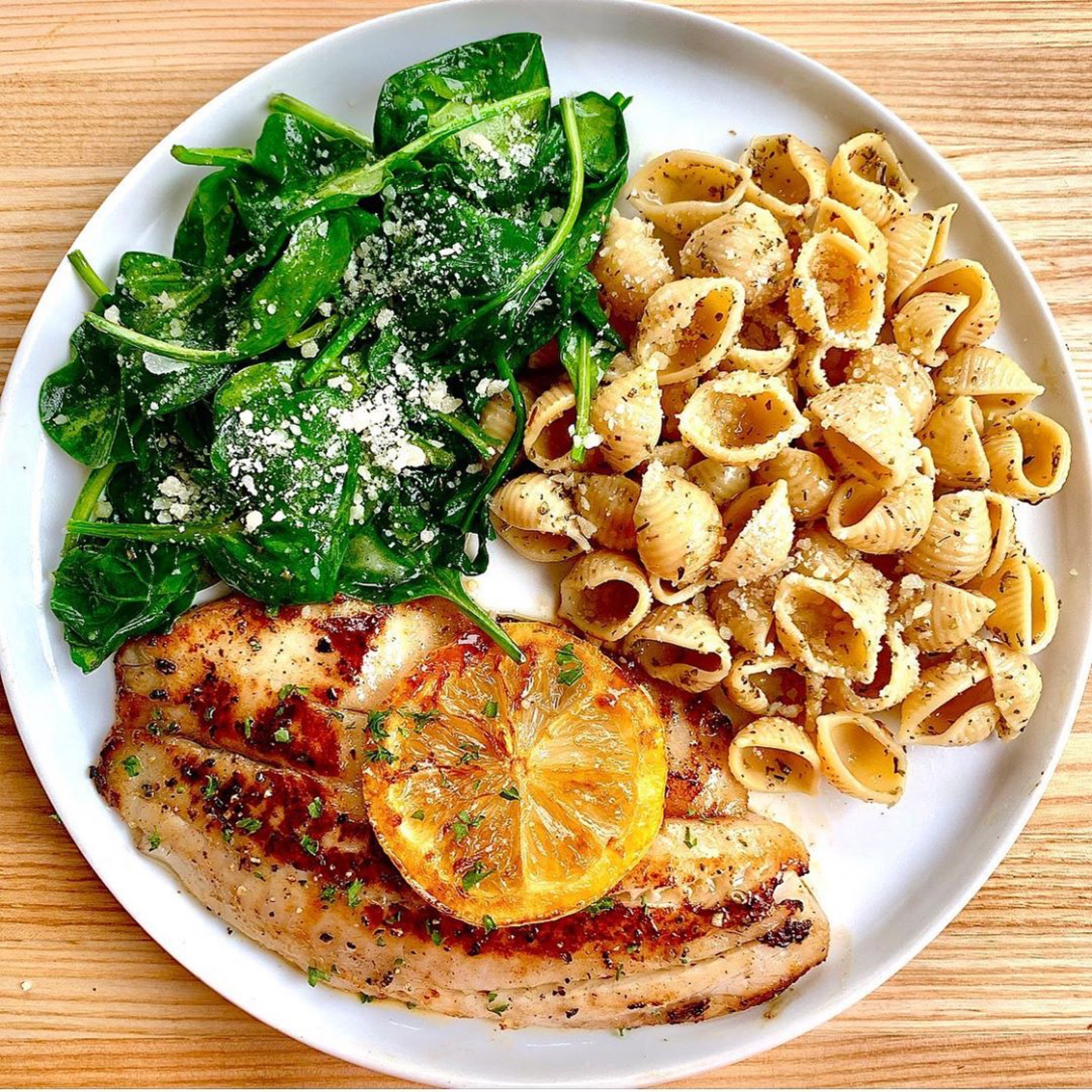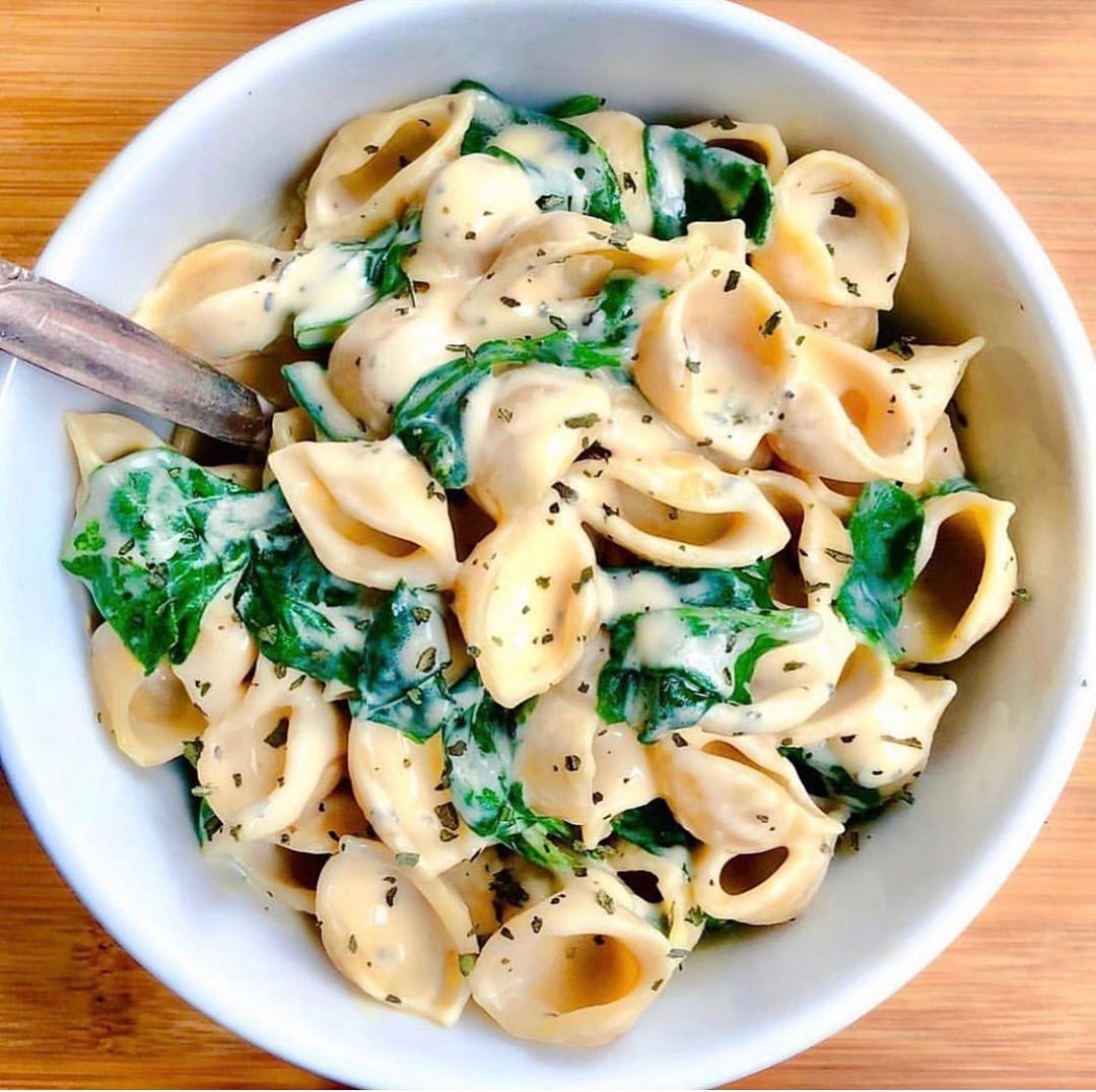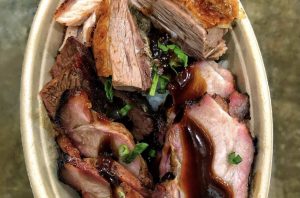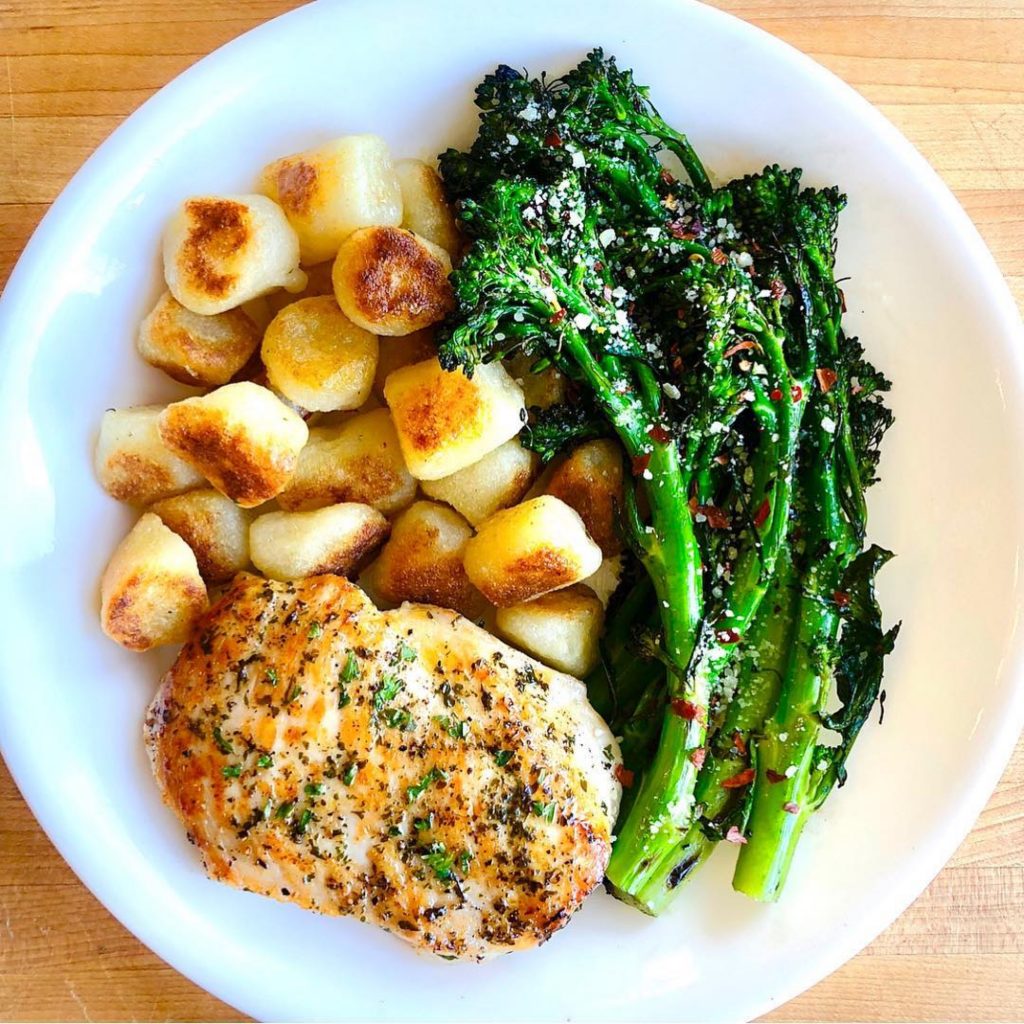
So, what pisses you off more? Your inability to stick to exercise, lose weight, fit into your clothes and feel better? Or, the dizzying array of books, programs and meal-services that are peddled as the ultimate solution or require you to keep paying for the rest of your life…and then leave you fatter and more dejected than ever before?
It’s time for a sanity check!
But, before we get too far, you should know that, while I’ve been in the healthy-living biz for more than a decade and worked with everyone from soccer-moms to movie-stars, I come from the school of thought that says personal-trainers, yoga-teachers and lifestyle coaches, no matter how skilled are not registered dietitians.
So, I’ve enlisted the help of my favorite, well-known New York City nutritionist here. She is, in fact, an impeccably pedigreed registered dietitian, having graduated NYU summa cum laude and interned at Massachusetts General Hospital. Before moving to the healthy restaurant biz, she provided counseling services for New York Presbyterian Medical Center and Canyon Ranch in the Berkshires in addition to her own private practice and has spoken nationally.
And to my wonderfully good fortune, she is also my rockstar-wife, Stephanie. The depth of her knowledge and the quality of her counsel regularly awe me. The discussion that follows is, in fact, very much a collaborative effort.
Getting past the diet quick fixes and weight-loss miracle cures.
Over the years, Stephanie and I have spent thousands of hours discussing, debating and, at times, battling over the details, nuances and pros and cons of virtually every diet known to woman. One of the toughest issues we’ve confronted is the diet that provides real short-term results, but may have serious long-term health consequences.
A new one comes out virtually every week. Or, let me rephrase that. An old diet is retooled and given a new book cover virtually every week. If you don’t believe me, take a look at the original 1972 copyright date on the hot, new Atkins craze.
The thing is, when you get past the fancy explanations and kooky concoctions…
Virtually every diet out there works by making you take in significantly fewer calories than you burn.
Do this and you lose weight.
You may eat fewer carbs, more fat or mounds of cabbage or protein. You may even end up experiencing all the changes in physiology, insulin, blood glucose or fat transportation claimed. But, when you sit down and do the math, you also inevitably end up eating far fewer total calories.
Indeed, even on an Atkins-style diet, many people end up getting so bored of eating the limited selection of high-fat, high-protein foods required that they inadvertently end up eating far fewer total calories than before. Cut your calories significantly and most anyone will lose weight.
But then comes the fallout.
The rapid return of weight as soon as you go off the diet that didn’t set up your mind for continued success, teach you how to eat intelligently and healthfully and maintain your results for life. The inevitable psychological effects of repeated yo-yoing, spiraling your weight slowly higher with each attempt. And the well-documented, increased risk of heart disease, stroke, diabetes and cancer from diets that sacrifice carbohydrate and fiber in the name of saturated fat and protein. So, what do you do?
Throw away all the fad-diets, magic foods, combinations, percentages, fat-burners and miracle cures.
For weight loss, these four simple principles stand tall:
* Create a caloric deficit by eating fewer calories and moving your body more.
* Choose foods with a higher volume/calorie ratio, so you can still eat a lot of food.
* Keep your program flexible, so that it works with your personality & lifestyle
* Eat consciously. Eat to fuel your body when you are hungry, not out of habit or to calm your nerves when you are anxious.
That’s it. End of story. Find a diet that does this and combine it with the outrageously powerful action mindset and you will lose weight and keep it off.
Let’s spend a few moments on the four principles.
1. Create a caloric deficit by eating fewer calories and moving your body more.
Once you move past mindset, weight loss comes down to math. Let’s say you need 2,500 calories a day just to maintain your weight. If you eat only 2,000 calories a day, your body needs to get the extra 500 calories from something other than food. Much of that extra energy is found in your fat cells. Your body empties energy stored in your fat cells into your bloodstream and uses that to make up the shortfall. This shortfall, by the way, is called a caloric deficit.
You may create a caloric deficit by eating less, exercising more or a combination of the two. If you create a caloric deficit every day, then, over time, the energy stored in your fat cells gets used more and more. That makes your fat cells smaller and you thinner. Of course, this is grossly oversimplified, but it illustrates a simple lesson. The nutrition part of losing fat comes down to calories, not magic combos, percentages or foods.
For 2 1/2 years, Stephanie operated a company in New York City called Healthy Palate. It delivered gourmet, low-fat, reduced calorie fare to peoples’ homes in pre-packaged, portion controlled containers. By the way, for any of you who think healthy food must taste horrible, you are wrong. This food was out of this world. So good, in fact, it landed her a prominent place in a feature article in New York Magazine.
The recipes used real food, oil, sugar, red meat, pork, chicken, whole grains, pastas, breads and lots of fruits and vegetables. People ate things like chicken parmesan, meatloaf with mashed potatoes, a variety of gourmet pastas, stir-fried ginger chicken, caesar salad, cheesecake, chocolate mouse, french toast with maple syrup and lemon cookies.
The main difference between this fare and a gourmet restaurant was that Stephanie redesigned recipes to reduce saturated fat, sodium and calories and she tightly controlled the portion size and total calories of each meal. The meals were, however, rich with carbohydrate. A number of her clients ate her fare for breakfast lunch and dinner.
Guess what, the weight started falling off!
Clients would call her after a number of months to revel in memories of mouse cake and mention, as an aside, that they had lost 25, 30 or 40 pounds. The moral, again, is that, with rare exception, it’s not the percentages or dining order of nutrients that makes you fat, it is the amount of total calories.
So, why do health practitioners have such a hard time selling the basic portion control and healthy eating diet? Two reasons.
* One, because, it’s not exciting or new. People have a hard time rallying around something that they’ve known about their whole lives. There is nothing fancy to buy or read or chart. No breaking research to trumpet and no doohickeys to play with. Age-old methods almost always lose out to flashy quick fixes.
* Two, because the vast majority of intelligently created eating plans still lack a powerful mindset program and the flexibility to drive the vision and make it adaptable to individual lifestyles.
2. Choose foods with a higher volume/calorie ratio, so you can still eat a lot of food.
What in the world does that mean? O.K. The easiest way to explain it is with an example. Two Reese’s peanut butter cups contain 250 calories, take about 30 seconds to eat and, I don’t know about you, but they don’t exactly leave me feeling full. On the other hand, for about the same number of calories, you could eat a bowl full of strawberries plus a slice of honeydew melon plus a juicy apple plus a cup of fresh grapes. And, that’s just a snack.
Now, which one do you think will make you feel fuller? For almost everyone, it is the latter. The reason is that the fruit has a great deal more volume and weight than the peanut butter cups and volume is a big part of what makes you feel full. This volume comes, most often, from the water and natural fiber found in many foods, like fruits and vegetables.
So, when choosing your foods, look for items that contain more water, more fiber and more volume. The more volume there is per calorie, the more total food you can eat, the fuller and more satisfied you will feel and you will still lose weight. Imagine that. You may find that you can even eat even more food than you eat now and still lose pounds.
If you’d like to learn more about volume, we would recommend you take a read through Volumetrics, by Barbara Rolls, Ph.D. and Robert A. Barnett or Picture Perfect Weight Loss, by Dr. Howard M. Shapiro. The former is more clinical with detailed descriptions and studies and the latter has a lot of great pictures that show you, visually, how much more food you can eat when you include volume in your choices. In fact, the Volumetrics plan was recently rated the best diet plan by Consumer Reports.
3. Keep your weight-loss program flexible, so that it works with your personality & lifestyle.
Mindset and ease of compliance are critical factors. There may be a lucky few whose lives and personalities just happen to work well with the specifics of a particular commercial diet, but they are just that—a lucky few!
So, while eating 6 times a day may, indeed, create a very small bump in caloric expenditure due to thermogenesis (metabolizing food) and help regulate blood sugar, if your job and lifestyle simply don’t allow for it, then trying to force yourself into an impossible routine will likely result in abandonment and failure.
Same thing with upping your fluid/water intake. Is it helpful? You bet, but if your job requires you lead long meetings, guess what, even after your body rebalances and stops holding onto water, you’re going to be heading to the head a lot more often and that may end up warring with the demands of your job.
So, when exploring any approach, be sure to look at whether the requirements are not only effective, but “doable” in the context of your life.
The challenge of any program or book is to provide a robust solution for a wide range of people with different lifestyles and desires. It is impossible, in a book format, to provide a program that is as tailored to your personal needs as one designed by a skilled registered dietitian.
In my book, The Long Hard Fix, I build on the four guiding principles above to present the Nutrition Framework, a straight-forward approach to eating that is capable of delivering exceptional results for a large cross-section of people. Indeed, it has already created profound change in bodies of many prior participants in this program.
This approach to fueling your body puts you in the driver’s seat. It gives you the ability to adapt the program to your lifestyle on the fly. It lets you move between levels of commitment as your demands change, without gutting the power or intent of the program. It gives you flexibility and that, combined with your Action Mindset, makes this program significantly easier to comply with. In fact, the general approach can even overlay most any other sensible approach to fueling your body.
4. Eat consciously. Eat to fuel your body when you are hungry, not out of habit or to calm your nerves when you are anxious.
It sounds reasonable, but we know how challenging this simple notion truly is. There are three simple steps to making this happen.
First, complete all of the exercises needed to create the Action Mindset (coming in my Lifestyle Evolution article next Monday). This powerful tool will be immensely helpful in giving you the drive to make the nutrition choices that will transform your body.
Second, at least in the beginning, before you eat and while you eat, be very aware of your hunger. Ask yourself “am I hungry?” or, if you are already eating, am I still hungry?”
Take a moment and really consider the question. Very often you will find yourself eating just out of habit or when you are anxious. You may even feel downright full and still continue to eat. So, start with the simple question. Ask it and answer it. You may end up doing this hundreds of times a day in the beginning (If you do, that tells you something right away!). Over time, you will become more aware of your hunger naturally as you eat and drink and the conscious question will become less necessary.
Finally, if the answer to your hunger question is “yes, I am genuinely hungry” and you have calories left to eat for the day, then go ahead and eat. If, however, the answer is “no, I am not genuinely hungry” or, often times, “I am actually a bit bloated,” then stop eating or drinking right then and their on the spot! No questions. No “one last bite.”
Wherever you are in your grazing pattern, stop. It is black and white. This will be immensely easier to follow, by the way, once you have already cultivated the Action Mindset. Starting to see a pattern?
What about Genetics, Physiology and Special Foods?
What about the obesity gene, metabolic rates, calorie percentages, insulin, carbohydrate, protein and fat? Aren’t they the answer? All play a role and all can be manipulated, but in the end, the deciding factor is what goes on in your head.
Genetics absolutely affect weight.
To say otherwise would be ludicrous. They do not, however, doom you to obesity. In fact a growing body of research points to the conclusion that genetics account for 25 to 40 percent of your propensity to become obese. While this percentage is significant, it is far from determinative.
Indeed, it tells us that 60 to 75 percent of obesity and weight gain are about something other than family fate. A big chunk of that number comes down to behavior and you know where that leads us – back to mindset.
This realization has, in fact, led the weight loss community to become obsessed with finding a way to hot-wire your mind to inspire sustained lifestyle change.
Surgical willpower.
Indeed, they have been able to encourage significant weight loss in patients with surgery and medication that alter behavior, but leave alone metabolism and genetics. Options range from gastric banding to serotonin manipulating drugs. Gastric banding, in very simple terms, is when a doctor reduces the amount of food the stomach can hold, forcing you to eat less. Translation–surgical willpower.
Pharmaceutical willpower.
Serotonin-regulating drugs either enhance the amount of serotonin, a chemical that increases feelings of satiety, in the brain or make it stick around longer. This reduces your desire to overeat. Translation–pharmaceutical willpower.
Even though they do nothing to regulate your metabolism or turn off your obesity gene, both medical options are highly effective at reducing weight, especially in morbidly obese people, because they create a change in mindset and behavior.
But, just like hot-wiring a car, these fixes usually stop working after a certain period of time and carry the risk of potential side effects that range from heart valve defects, death and surgical complications to the cost of the drugs, medical monitoring and questions about long term repercussions. They put your body at risk, empty your wallet and ignore the fact that these same changes in behavior may be cultivated without the risk, side-effects and added expense.
What about special food combinations or percentages?
The latest wave of weight loss programs seem to promote specific foods and balances rather than calorie control. Increase protein, cut carbs, change the percentages. Special diets that claim to manipulate insulin, glucagon and cortisol in the body are all the rage. They may, in fact, induce all of the metabolic changes claimed. But are any of these schemes really any more effective at long term weight loss and health promotion than basic calorie management and inclusion of adequate amounts of fruits, vegetables, fiber and other vital nutrients? While I continue to monitor the research, the answer to date is a resounding no!
Long-term weight loss: common traits.
If we look at the National Weight Control Registry, the largest recorded survey of sustained weight-reducers in this country, we would see an amazing thing. The registry contains the names of more than 3,000 people who have lost at least 30 pounds and kept them off for more than a year. In fact, the average registrant has lost 60 pounds and kept them off for more than five years.
Amazingly, the single nutritional rule that unites all of these success stories is eating fewer calories, NOT focusing on any particular food balance, percentage or group. Indeed, the types and combinations of foods vary across the board. This tells us that, when it comes to weight loss, no single special food or food group is the answer, less food is.
What gives us the ability to eat less and include vital nutrients? Right again, mindset. Create your action mindset, build your behavior around the for Guiding Principles and minimize physical and psychological barriers and you have the key to sustained nutritional excellence.
Exercise and weight loss.
The NWCR makes it clear, too, that daily exercise, often for up to 90-minutes, is critical in maintaining long-term weight loss. And, if you know what to do, you can actually have so much fun exercising, you’ll never want to stop.
Final word – if you’re looking for the end-all-be-all of diets for all people, there is no such animal!
You should feel free to apply the Four Guiding Principles above and Action Mindset (coming next Monday) to create your own program or integrate them into any other sound dietary program that meshes with your personality and lifestyle or seek the advice of an experienced registered dietitian.
Indeed, any program defined by the Four Guiding Principles and aided by the Action Mindset or some equivalent will yield immediate and powerful results.
And, as always, be sure to check with your physician or healthcare professional before beginning this or any new dietary program.
[This article was taken from excerpts from the book, The Long Hard Fix: How to create the critical mindset that fuels dramatic lifestyle change and weight loss.]

